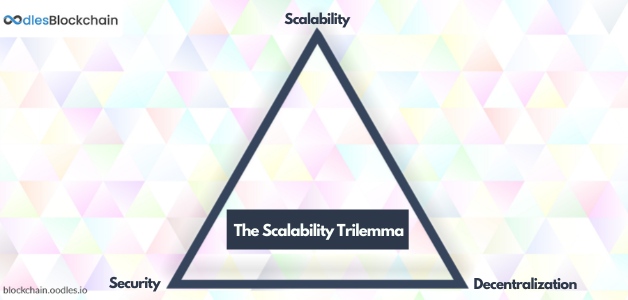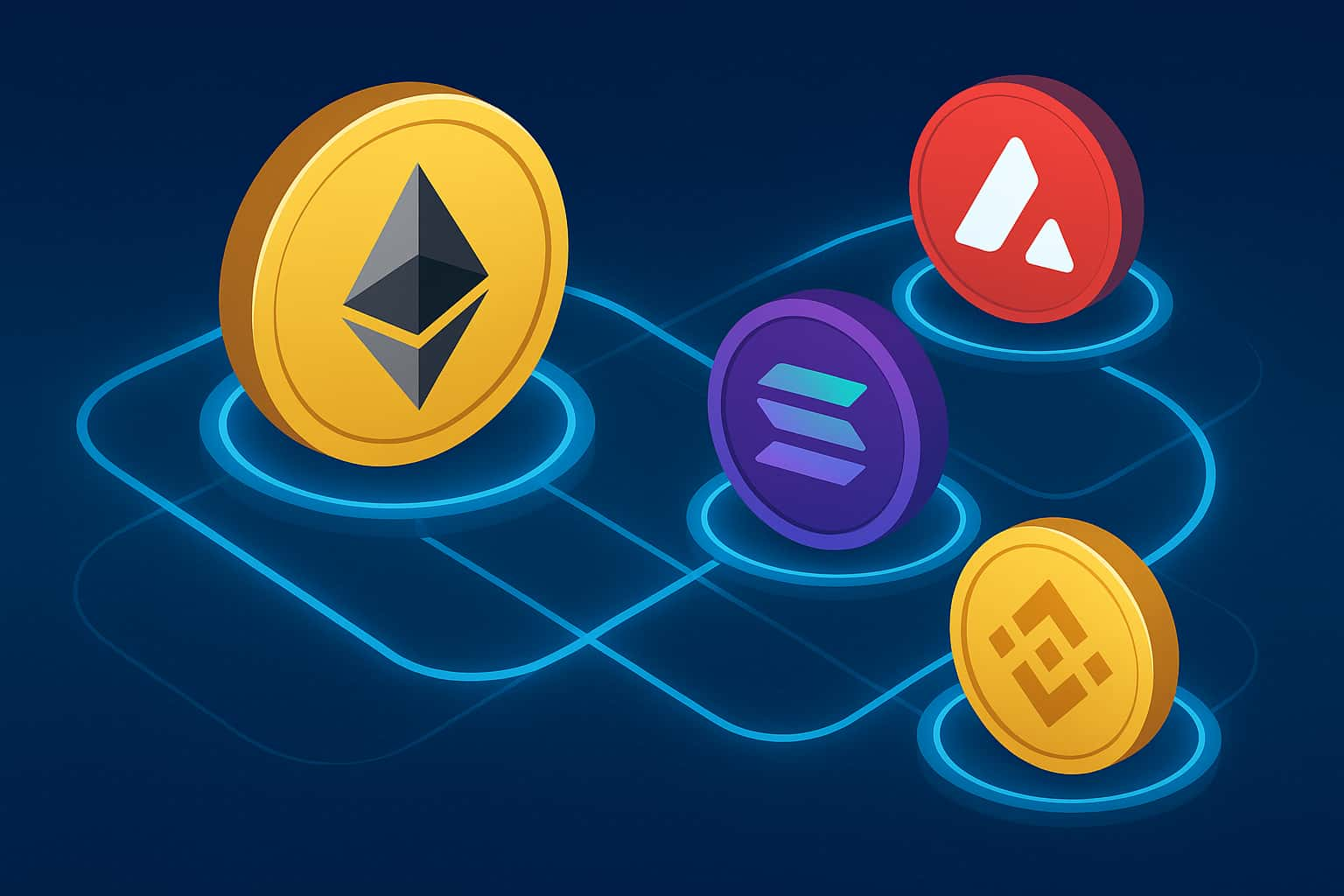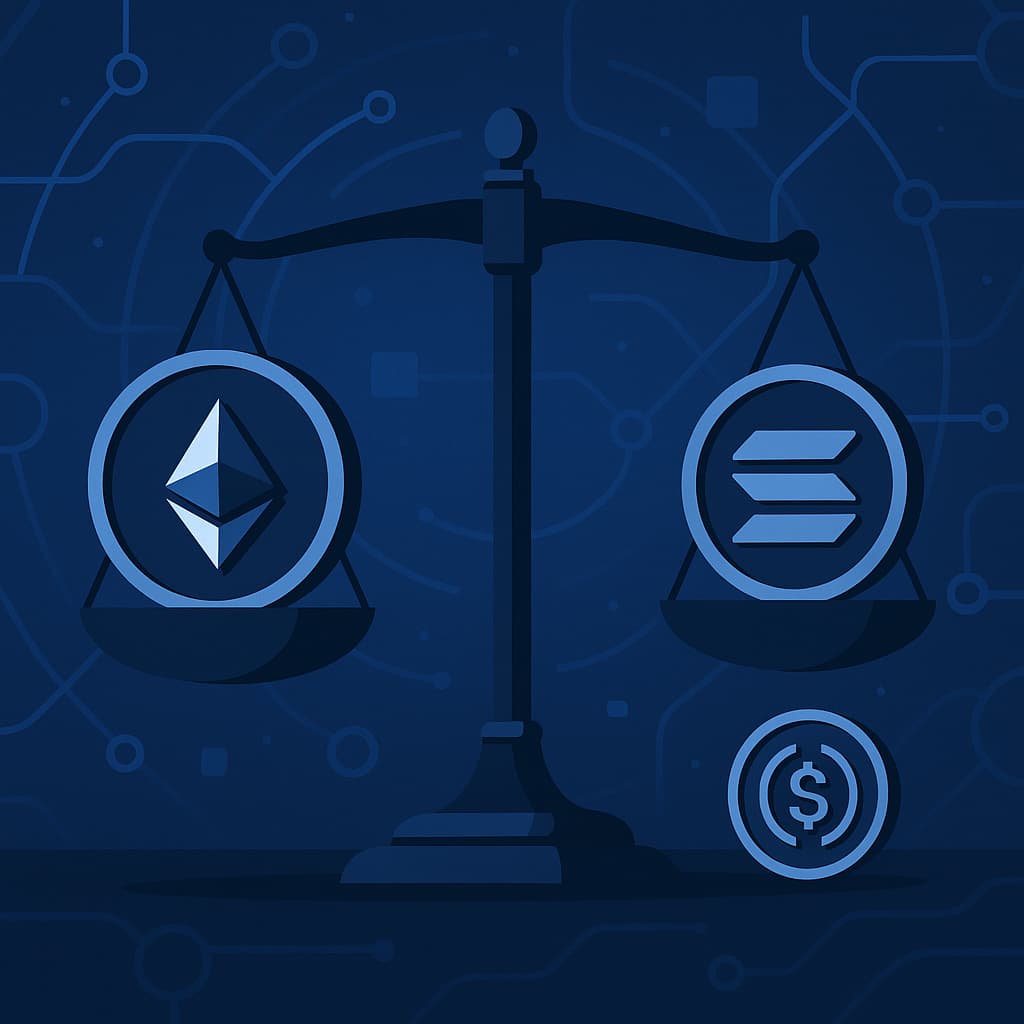-
A fault in the cryptocurrency and blockchain adoption plan occurred in December 2017. At that time, investors anticipated that cryptocurrency was on the approach to mass acceptance. Transaction fees increased in tandem with the number of transactions. People were paying an average charge of about $55 to send bitcoin. While in some cases, waiting several days for transactions to clear. This bottleneck highlighted a disadvantage of decentralization. Reaching consensus over a decentralized network is slower and more difficult than in centralized systems. This paradox is at the heart of blockchain development, and Ethereum developer Vitalik Buterin has elegantly described it.
The Trilemma of Scalability of Blockchain
In the early days of Ethereum, Buterin created the term 'scalability trilemma.' It described the "difficult trinity" of decisions that blockchain engineers must make. They can only choose two from scale, security, or decentralization to have in the network. Developers may only optimize for two of these attributes due to the structure of decentralized systems.
Scalability
A network's throughput rate means its capacity to process transactions. Blockchains must be able to handle thousands or millions of transactions on the network. It must do so without sacrificing settlement times or efficiency to deliver on its revolutionary promises.
Security
Blockchain must have the ability to withstand attacks. The ledger should have advanced immutability and the ability to withstand fraud and hostile threats like 51 percent attacks.
Decentralization
It is the core concept of blockchain—the network's upkeep depends on the number of nodes that form it. The network gets more censorship-resistant as the number of distinct nodes supporting it grows. Cryptocurrency initiatives are still attempting to achieve a balance between these three. Also, Read | Emerging Use Cases of Smart Contracts on Blockchain Technology
Layer 1: Resolving the Scalability Trilemma of Blockchain
Layer 1 refers to blockchain-based platforms like Litecoin and Ethereum operational as decentralized ecosystems. There are several methods in development right now that can improve their scalability without compromising the other two factors.
Sharding
Sharding has become one of the most popular Layer-1 scaling methods despite its experimental character. It divides transactions into smaller "shards" of data. The network processes these shards in parallel, allowing for sequential work on multiple transactions concurrently. Furthermore, rather than having each network node maintain a copy of every block, it partitions this information and distributes it across separate nodes, known as Shards. Shards give proofs to the mainchain and communicate with one another using cross-shard communication protocols. Then, they efficiently transfer addresses, balances, and general status. Along with Zilliqa, Tezos, and Qtum, Ethereum 2.0 is one high-profile blockchain system researching the use of shards. Also, Read | A Compact Guide to Understanding Polkadot Blockchain
Improvements to the Consensus Protocol
The consensus protocol currently in use on popular blockchain networks like Bitcoin is Proof of Work. PoW is secure, but it is also slow. Bitcoin, for example, only gets seven TPS. That's why many blockchain networks choose the Proof-of-Stake (PoS) consensus method, probably most notably Ethereum's upgrade to Ethereum 2.0. The PoS consensus mechanism decides validator status based on a stake in the network. It does not require miners to solve cryptographic algorithms with significant processing power. It can enhance the Ethereum network's capacity considerably and fundamentally while also increasing decentralization and assuring security.
Layer 2: Resolving the Scalability Trilemma of Blockchain
Layer 2 refers to a network or system that runs on top of an underlying blockchain protocol to increase scalability and efficiency. For example, Bitcoin is a Layer-1 protocol, and the Lightning Network is a Layer-2 solution designed to speed up Bitcoin transactions. Layer-2 protocols have exploded in popularity in recent years. They're proving to be the most effective approach to solve scaling issues in PoW networks in particular. Also, Read | The Curious Case of Blockchain in Event Management
Sidechains
A sidechain is a transactional chain that runs alongside a blockchain and comes into use for bulk transactions. Sidechains employ a separate consensus mechanism from the main chain. Stakeholders can tune it as per speed and scalability requirements. It also requires using a utility token as part of the data transfer mechanism between the two chains. The main chain's principal function is to provide general security and dispute resolution. In several important ways, sidechains differ from state channels. Sidechain transactions are not private between participants; instead, they are available on the ledger. Furthermore, security breaches on sidechains do not affect the mainchain or other sidechains. Building a sidechain from the ground up necessitates a significant amount of time and work. Also, Read | Making Blockchain Solutions Efficient with Sidechain Technology
Blockchains that are Nested
A nested blockchain is a decentralized network infrastructure that uses the main blockchain to specify network parameters. It carries out executions on a web of secondary blockchains. On the primary chain, blockchain tiers require a parent-child relationship established. The parent chain delegates work to kid chains. They complete it and return it to the parent. Unless there is a need for dispute resolution, the underlying blockchain does not participate inside network services. Layer-2 stacked blockchain infrastructure, such as the OMG Plasma project, comes into use above Layer-1 Ethereum. They support faster and cheaper transactions. The work distribution in this approach minimizes the processing load on the mainchain, resulting in exponentially improved scalability.
Channels State
A state channel improves total transaction capacity and speed. It does so by facilitating two-way communication between a blockchain and off-chain transactional channels. A miner does not need to be involved right away to validate a transaction over a state channel. Instead, it is a network-adjacent resource that a multi-signature or smart contract mechanism projects. The ultimate "state" of the "channel" and all its inherent transitions remain on the underlying blockchain when a transaction happens. State channels include the Liquid Network, Celer, Bitcoin Lightning, and Ethereum's Raiden Network. In the trilemma tradeoff, state channels give up some decentralization in exchange for increased scalability.
Also, Read | Artificial Intelligence and Blockchain | A Potent Combo
The Blockchain Trilemma is a Conundrum Everyone wants to Solve
Although the blockchain trilemma poses obstacles to blockchain adoption, solutions are emerging to create a balance between security, decentralization, and scalability. While the CAP theorem has held for nearly four decades, Layer-1 and Layer-2 solutions can ensure distributed, secure, and scalable decentralized networks.

Our Offices
INDIA
Emaar Digital Greens, Sector 61,
Gurugram, Haryana
122011.
Welldone Tech Park,
Sector 48, Sohna road,
Gurugram, Haryana
122018.














